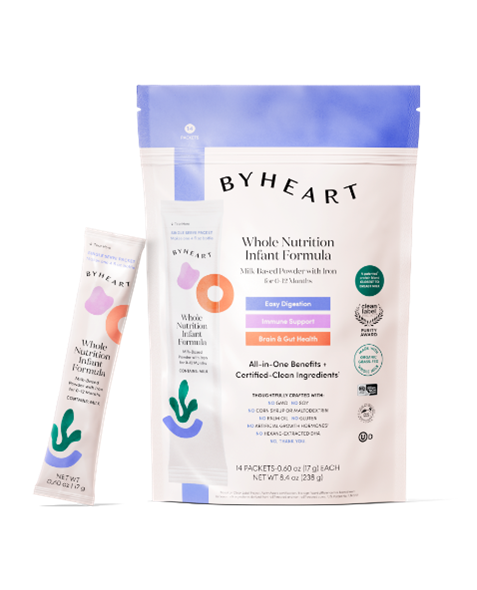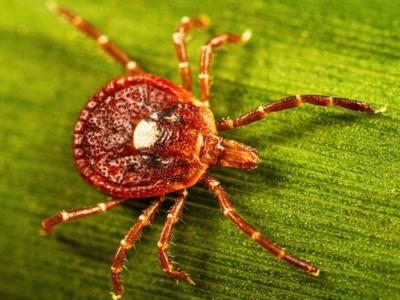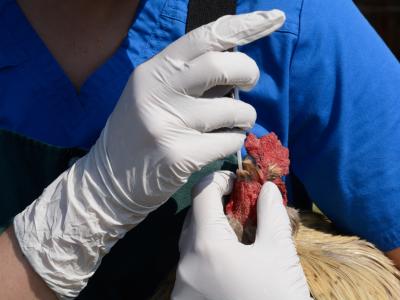- The Cambodian Ministry of Health confirmed that a 22-year-old man from Phnom Penh has died from avian flu, according to a Ministry of Health statement translated by Avian Flu Diary, an infectious disease blog. This is the 18th case of human H5N1 in Cambodia this year, and officials have not yet been able to determine the source of exposure. The latest human cases in Cambodia have involved a reassortant (2.3.2.1e) between an older H5N1 clade that has circulated in Cambodia since 2014 and the newer clade 2.3.4.4b virus that is circulating globally.
- The US Centers for Disease Control and Prevention (CDC) has published its first weekly FluView update since September 26, showing that seasonal influenza activity is low nationally but is increasing. Of the 72 influenza viruses reported by public health laboratories, 67 were influenza A and five were influenza B. Of the 53 influenza A viruses subtyped, 38 (71.7%) were the H3N2 strain. H3N2 has dominated the early flu season in Japan and the United Kingdom.
Quick takes: Avian flu death in Cambodia, return of US FluView
First ever human case of H5N5 avian flu confirmed in Washington state

The health department in Washington state has confirmed that a resident of Grays Harbor County is the first person to be diagnosed as having avian flu in the United States since February, and the first human ever known to be infected with the H5N5 strain.
The person had underlying conditions, officials said.
Previous human detections in the United States have involved the H5N1 strain, which infected thousands of cattle, as well as commercial poultry and wild birds, in the past two years. Most human cases involving H5N1 have been mild, but one man died in January in Louisiana.
During a briefing over the weekend, the patient was described as an older person who is severely ill and remains hospitalized after developing a high fever, confusion, and difficulty breathing.
'Mixed backyard flock' at home
"The affected person has a mixed backyard flock of domestic poultry at home that had exposure to wild birds. The domestic poultry or wild birds are the most likely source of virus exposure; however, public health investigation is ongoing," the health department said in a press release. "The Washington State Department of Health is working with the local health department and the Washington State Department of Agriculture to complete exposure and animal health investigations."
So far, no other people in the state have been identified as having H5N5. Human-to-human transmission of avian flu has not been documented.
Washington state has had dozens of detections of avian flu in wild birds, waterfowl, and backyard poultry in the past weeks, mirroring a national spike in activity.
Multistate infant botulism outbreak adds 8 more cases, 23 total

The outbreak of infant botulism tied to infant powder formula has grown by eight cases in just three days, according to the latest updates from the Centers for Disease Control and Prevention (CDC) and the Food and Drug Administration (FDA).
The multistate outbreak, which is linked to ByHeart Whole Nutrition Infant Formula, now stands at 23 cases, all involving hospitalization. Infants in thirteen states have been affected, which means one new state is now affected. No deaths have been reported.
Illness-onset dates range from August 9 to November 11. Infant ages range from 16 to 200 days.
Infant botulism occurs when the bacterium Clostridium botulinum infects a baby's large intestine and produces toxin. Symptoms include constipation, poor feeding, loss of head control, and difficulty swallowing, which can progress to difficulty breathing and respiratory arrest. Symptoms can take several weeks to develop following ingestion.
Expanding recall
ByHeart recalled two lots of Whole Nutrition Infant Formula on November 8 on the recommendation of the FDA. The recommendation was based on the number of parents who had reported feeding ByHeart formula to infants in the outbreak, along with preliminary lab results from the California Department of Health that suggested the presence of C botulinum in an open can of ByHeart formula that had been fed to an infant in the outbreak.
On November 11, the FDA expanded its recommendation to include all ByHeart infant formula products, and the company subsequently said it was expanding its voluntary recall to include all batches of Whole Nutrition Infant Formula cans and Anywhere Pack nationwide. ByHeart products account for roughly 1% of all infant formula sold in the United States.
USA Today reports that two families have filed complaints in federal courts against ByHeart after their infants became ill.
The CDC and the FDA are advising parents and caregivers to stop using any ByHeart infant formula products immediately, and for retailers to ensure that the recalled products are not on store shelves. The FDA says its investigation, including onsite inspections and sample collection, is ongoing.
Emergency department messaging doesn't increase COVID vaccine uptake, study finds

Emergency department (ED) patients who received tailored messages or a simple inquiry about the COVID-19 vaccine were no more likely to take the vaccine than patients who didn't receive interventions, according to a recent study published in JAMA Network Open.
For the cluster randomized clinical trial, a team led by University of California researchers divided 852 ED patients into three groups. The first group received a tailored message about the COVID vaccine followed by a question about their willingness to accept the vaccine. The second group received a vaccine acceptance question only, and the third group received no intervention beyond usual care.
The 464 women and 388 men who participated in the trial had a median age of 47 and had not been vaccinated for COVID within the past 6 months. Participants were enrolled across six emergency departments.
Vaccine uptake at 30 days was not significantly higher in either intervention group (5.7% vs 3.0%; absolute difference, 2.7 percentage points) compared with the control group (4.0% vs 3.0%; absolute difference, 1.0 percentage point).
Vaccine availability an important factor
While the study found that neither intervention significantly increased vaccine uptake, more participants took the vaccine when it was readily available in the ED (9.8% vs 3.3%; absolute difference, 6.5 percentage points).
"Tailored messaging alone, even when built with personalization and thoughtful ethical considerations, is likely not enough. Less than 6% of patients in the intervention arms received the booster," note Anish K. Agarwal, MD, MPH, and Raina M. Merchant, MD, both of the University of Pennsylvania, in a commentary published alongside the study. "By contrast, the effect size nearly tripled in EDs where the vaccine was readily available," suggesting that opportunity and convenience play a role in vaccine uptake.
Tailored messaging alone, even when built with personalization and thoughtful ethical considerations, is likely not enough.
"What matters most may not be how convincingly or carefully questions are asked but whether an action can be delivered immediately," write Agarwal and Merchant. "This points to a simple, pragmatic solution for future interventions: do not just ask; offer and administer on the spot."
New test bests culture method by quickly detecting 3 fungal pathogens at once, researchers say

Researchers at Indiana University have announced that they developed a molecular test that can simultaneously detect three major disease-causing fungi much faster than traditional methods, speeding treatment.
The research was presented at the recent Association for Molecular Pathology 2025 Annual Meeting and Expo in Boston.
Histoplasmosis, blastomycosis, and coccidioidomycosis, which are often linked to contaminated soil, occur in different parts of the United States. Because they are often mistaken for other respiratory illnesses, correct diagnosis of the potentially life-threatening infections remains low, which delays treatment.
The real-time polymerase chain reaction (PCR) test directly targets genetic regions unique to each fungus, bypassing the slow culture process that is complicated by the fungi’s ability to switch between environmental and human forms.
Compared with standard methods, the PCR test identified all samples with 100% accuracy. In addition, it was 100% specific, meaning that it didn't mistakenly flag other fungi or contaminants.
"Our assay has the potential to significantly improve turnaround time and diagnostic confidence for infections that have historically been difficult to detect quickly," Kenneth Gavina, PhD, who oversaw the project, said in the AMP news release.
Could fill 'major gap' in fungal diagnostics
Histoplasmosis, which is most common in the Ohio and Mississippi river valleys, usually presents as a lung infection in patients who have inhaled soil containing bird or bat droppings. Blastomycosis, which occurs mainly in the central and southeastern United States, also presents as a lung infection but can spread to bones, skin, and other organs.
Clinicians currently have no FDA [US Food and Drug Administration]–approved molecular tests for these three pathogens, making rapid, reliable detection a pressing need.
Coccidioidomycosis, or valley fever, typically causes mild infection but can lead to severe pneumonia or infection elsewhere in the body. It is seen primarily in southwestern states.
"While additional clinical validation is under way, this assay shows strong potential to fill a major gap in fungal diagnostics," Gavina said. "Clinicians currently have no FDA [US Food and Drug Administration]–approved molecular tests for these three pathogens, making rapid, reliable detection a pressing need."











